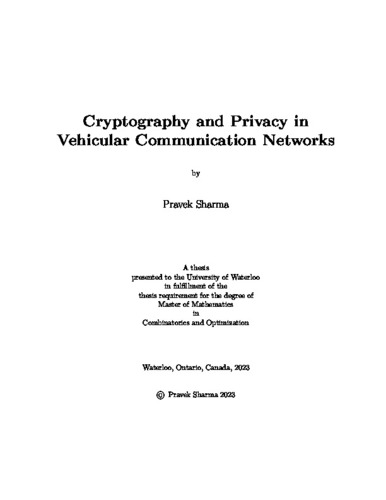| dc.description.abstract | Wireless communication technologies can support dynamic networks between vehicles, pedestrians and roadside infrastructure called Vehicular Ad hoc Networks (VANETs). Wireless communication over VANETs allows for several communications scenarios — between vehicles, between vehicles and infrastructure, and between vehicles and pedestrians, among others — collectively known as Vehicle-to-Everything (V2X) communication.
Fast wireless communication allows vehicles to communicate over long distances, improving a driver's perception compared to relying on human senses alone. Computerised automated decisions made in response to a wireless message also allow for a lifesaving decision to be much faster than the average human's reaction time can allow. A report by the United Stated Department of Transport shows that applications which use V2X communication, such as Emergency Brake Warning, Left-turn Assist, and Lane-change Assist, can help reduce unimpaired vehicular collisions by as much as 80%. Further, V2X applications like Cooperative Platooning and Emergency Vehicle Path Clearing offer improved fuel efficiency, traffic efficiency, and faster response times for emergency vehicles. For these reasons, V2X communication has garnered significant interest from the automotive industry, the research community and governments in recent years.
While V2X communication offers many benefits, unsecured V2X communication can also be exploited by adversaries to increase traffic congestion, track vehicles and people, and even induce vehicular crashes as we show in this thesis. For these reasons, it is necessary to secure VANETs and V2X communication. While security standards for V2X communication exist, their restrictive requirements can make implementing efficient applications difficult. Further, V2X application designers often design applications with little regard to security (incorrectly assuming that the standardised security measures provide adequate security regardless of the underlying application), resulting in applications that violate the security standards imposed restrictions, and leading to applications which are not secure. The Emergency Brake Warning application is one application affected by this disconnect between application designers and V2X security standards.
This thesis introduces the uninitiated reader to V2X communication, V2X applications, and V2X security standards while describing the necessary cryptography along the way. Then we discuss the working and limitations of current proposals for the Emergency Brake Warning application before describing EBW-PoF, a novel protocol for the same application, that overcomes these shortcomings. Finally, we discuss EBW-PoF's security, performance, and limitations. | en |

